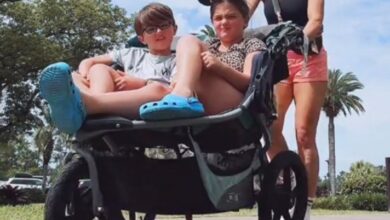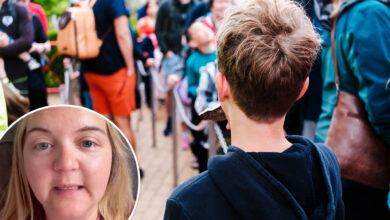Flexibility test may predict how long you’re going to live: study

If you want to live longer, flexibility exercises might be a step in the right direction.
Brazilian researchers calculated a joint mobility score — called a “Flexindex” — for about 3,100 healthy middle-aged adults who performed a series of 20 movements.
Men and women with low scores had a higher risk of dying — up to five times more, in some cases — than their flexible counterparts, the study found.
“Being aerobically fit and strong and having good balance have been previously associated with low mortality. We were able to show that reduced body flexibility is also related to poor survival in middle-aged men and women,” said corresponding study author Dr. Claudio Gil S. Araújo, a sports medicine physician.
Araújo developed the test used for the study more than 40 years ago. The Flexitest measures the range of motion in seven sets of joints — the ankle, knee, hip, torso, wrist, elbow and shoulder.
Exercises, which are only done on the right side, include extending the knee, rotating the shoulder and bending the arm at the elbow.
Women fared better than men, by 35%. Female participants 61 to 65 years old were, on average, 10% more flexible than men 46 to 50.
That is surprising because joint mobility tends to decrease as we age thanks to a loss of muscle mass, a thinning of cartilage and/or the onset of arthritis.
Researchers followed the participants, who were 46 to 65 years old, for about 13 years.
During that time, nearly 10% of the study population — about 300 people — died.
Flexibility scores were nearly 10% higher for the participants who survived compared to those who died.
“To the best of our knowledge, this is the first cohort study to show that a reduced level of body flexibility … is related to higher mortality in a large middle-aged cohort of men and women,” researchers wrote in their findings, published Wednesday in the Scandinavian Journal of Medicine & Science in Sports.
Other research has found a link between lack of flexibility and early death. A 10-second balance test and a sit-to-stand test have been said to predict longevity.
A UK fitness coach recently shared five exercises you can do at home to test how well you’re aging.
The Brazilian researchers say further studies should explore whether stretching or flexibility training, such as Tai chi chuan or yoga, affects lifespan.
The 20 movements that comprise the Flexitest
- Ankle dorsiflexion
- Ankle plantar flexion
- Knee flexion
- Knee extension
- Hip flexion
- Hip extension
- Hip adduction
- Hip abduction
- Torso flexion
- Torso extension
- Torso lateral flexion
- Wrist flexion
- Wrist extension
- Elbow flexion
- Elbow extension
- Shoulder posterior adduction at 180 degrees of abduction
- Shoulder extension and posterior adduction
- Shoulder posterior extension
- Shoulder lateral rotation at 90 degrees of abduction
- Shoulder medial rotation at 90 degrees of abduction




